2014 Drawing Now Paris
Illustrations that transcend paper at the world’s leading dedicated art fair

The eighth edition of Drawing Now Paris, the art fair dedicated to contemporary illustration, proved that drawing is not dead and, furthermore, showed that the medium is sprawling and verging into other forms of visual art. Evolving to include 3D objects, writing, monochrome painting and involving rhythmic gestures, this year’s event confirmed unequivocally, as a few of our favorite picks from the fair demonstrate: drawing is alive.

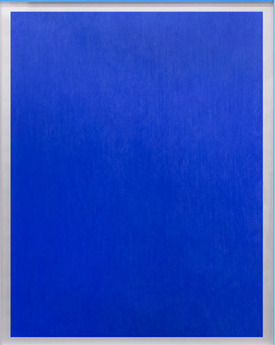
Ernesto Ballesteros
At first sight, the monochrome canvases by Buenos Aires-based Ernesto Ballesteros don’t stand out. But upon closer inspection, it becomes evident that the bold canvases got their color by pencil—and the coloring process is an integral part of the art piece. One of the most traceable aspects of Ballesteros’ technique is the amount of pressure of the pencil on the surface; from light shading to almost piercing the canvas. Fascinatingly, Ballesteros calculates the average speed of the drawing (in kilometers of line per hour) and—by counting the amount of time necessary to complete a canvas—he obtains the final length of lines. This total length also serves as the title of each of his pieces; such as “251,2 km de líneas aplicadas a un passage” or “Red Graphic: 251.2km of lines applied to a landscape.”
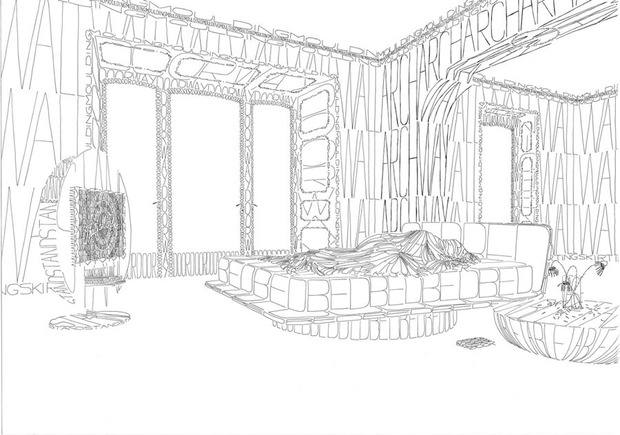
Thomas Broomé
Avoiding lines, coloring and any aspect of traditional illustration, Sweden’s Thomas Broomé relies solely on words for his art. Broomé’s “Modern Mantra,” can be seen as a play on content and style, letter and sense—where words replace objects. Broomé’s work is based on repetition of this process, which contributes to erasing or morphing the word’s meaning and to converting it into a structure. In this unique process the words used to avoid drawing have, indeed, become drawings themselves.
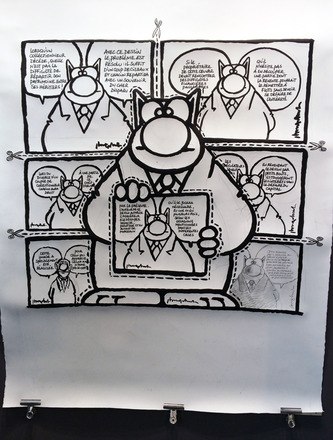
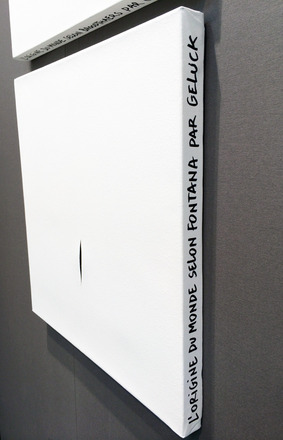
Philippe Geluck
After pursuing the line between letters and writing, Belgian cartoonist Philippe Geluck is stepping into 3D. Notorious for his tricky plays on words (delivered by his character Le Chat), his pieces are full of humor but also carry multiple meanings. In these new artworks, instead of his usual political subjects, Geluck goes after the art world’s codes, manners and limits. With his humorous cut-and-paste piece “Je me couperais en huit” (or “I will cut myself into eight pieces”) he makes fun of the inherent quarrels of artists. With other works, he pokes fun but pays homage to artists; like with his canvas boasting just one slit—echoing Italian artist Lucio Fontana’s infamous style.
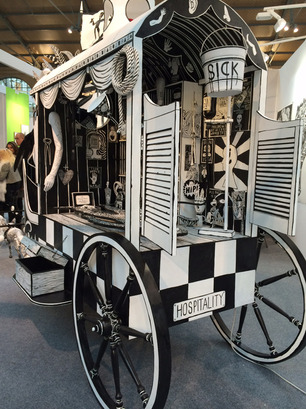
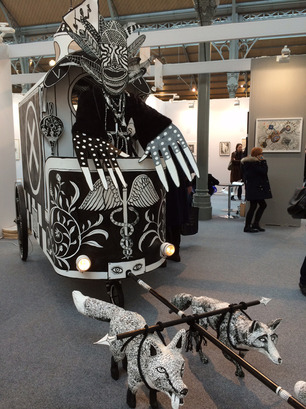
Le Gun
London-based art collective Le Gun (consisting of Bill Bragg,
Chris Bianchi, Neal Fox, Robert Rubbish,
Steph von Reiswitz, Alex Wright
and Matt Appleton) is responsible for a comic that blends pop culture with more deviant and dark entities. After several years of only black-and-white production, they introduced color, prior to playing with 3D. Portraying cartoon-style illustration in a three-dimensional space, they presented the fair with an over-the-top ambulance installation at the booth for Galerie Suzanne Tarasieve. This life-scale paperboard cart, drawn by foxes and driven by a shaman-like figure, full of potions and philters, illustrates issues regarding the British medical system and the return to traditional healing methods. Their thought-provoking yet light-hearted installation was initially inspired by English novelist Hari Kunzru.
Photos by Isabelle Doal












